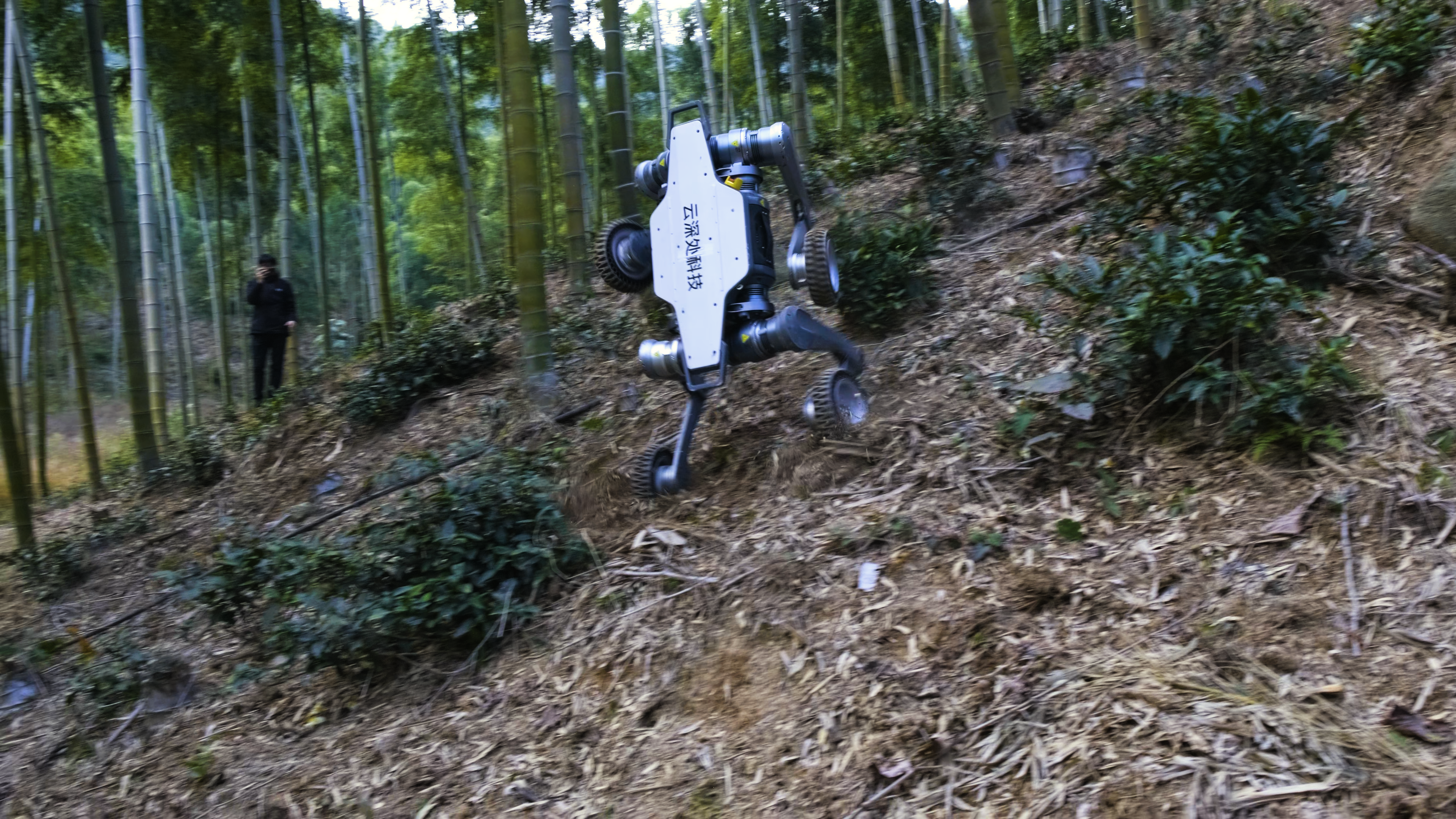
A new quadruped robot with wheels instead of hands and feet can drive, climb, perform acrobatics and map difficult outdoor terrain..
Chinese robotics firm DEEP Robotics released its “Lynx” robot, with the new machine designed to complete tasks in both specialized industries such as construction, utilities, or emergency rescue.
In a promotional video released Nov. 13, the Lynx model rolls at high speed on “two feet” down a wooded incline, scrambles up a 30-inch (80 centimeters) rock wall and even drives down a 50-degree, uneven slope covered with rocks and shrubs.
A key feature is the Lynx’s ability to travel on both two and four legs, all of which are topped with wheels bearing thick, offroading tires. This enables it to move in the manner most suitable to its situation.
For example, when scrambling across an incline in the video, the robot hops along the ground on two legs, while on a dirt track, it speeds along on all four wheels. At top speed, the Lynx can travel at 11 mph (18 km/h) and can jump steps up to 9 inches (22 centimeters) high.
Related: Watch this terrifying robotic torso spring into life
A high-definition camera sits on top of the robot that live-streams video back to its operators — which could help it complete tasks such as remote inspection of field machinery or a security patrol along a pre-defined border.
DEEP Robotics also uses a proprietary artificial intelligence (AI) platform for its robots, which is known as “DEEP Robotics AI+.” The company says the AI uses reinforcement learning — a machine learning training technique — to help the robot overcome obstacles such as walls
The Lynx’s batteries last for three hours of movement per charge, but these batteries can be swapped while the robot is in use. This means that, when accompanied by human handlers, it could function for far longer.
Despite its rugged credentials, the Lynx is only certified as IP54 resistant — meaning that while it can handle some dust and water spray, it’s not entirely waterproof. This vulnerability could make it unsuitable for some tasks, such as working in outdoor environments with significant rain or traversing waterlogged areas at speed.

The DEEP Robotics Lynx is now available for purchase via the company’s website, with buyers directed to specify their industry and asked to contact its sales consultants via a form
DEEP Robotics’ previous products include three other four-legged robots: the X20, intended for autonomous site inspections; and the X30, which the firm says is suitable for surveying, mapping or security. The Lite3, which can be configured to connect to the internet and is fitted with a lidar 3D-mapping sensor, is intended for research purposes only.
These robots follow a more traditional quadrupedal design— they have four legs but no wheels, so they are more limited in the surfaces they can successfully navigate.
In the future, DEEP Robotics wants to build more robots for the energy, mining, and emergency rescue sectors among others, as laid out in the industry-by-industry breakdown on its website. It is also working on an AI-powered humanoid robot that can learn by itself.

